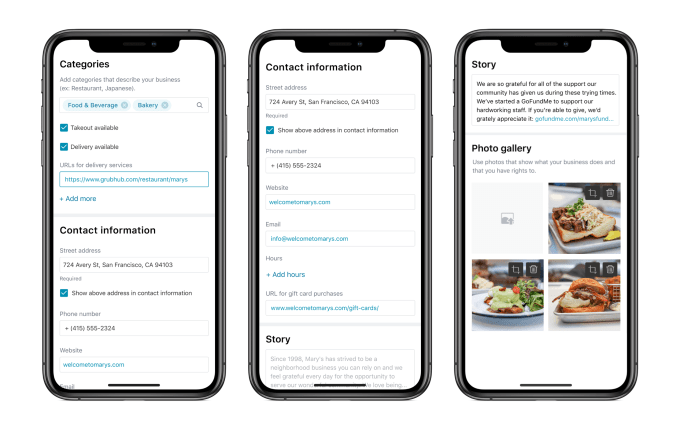Neighborhood social networking app Nextdoor is rolling out a few changes focused on supporting local businesses. The COVID-19 outbreak has forced many businesses to close their doors, sometimes for good, while others are struggling to stay afloat. As a result, many Nextdoor users have been posting on the app asking how they can help support their favorite businesses during this time. These new updates will allow them to do just that — by buying gift cards from local businesses, donating to fundraisers or shopping from a business that remains open by way of pickup or delivery.
Buying gift cards from local merchants has quickly emerged as an easy way for customers to help their favorite restaurants and other businesses during the coronavirus pandemic.
New sites, like HelpMainStreet.com and SaveOurFaves.org, have launched in recent days to make this process more organized. OpenTable’s gift card marketplace waived its fees. Meanwhile, other efforts had their hearts in the right place but flubbed the execution — as with Yelp’s disastrous implementation of a GoFundMe integration that didn’t allow participants to easily opt-out.
On Nextdoor, however, the app is simply being updated to allow the local businesses themselves to direct users to whatever websites or fundraisers they already have running.

For example, in the Business Profile section, the local merchant can now add a gift card website address to their profile. When Nextdoor users click the link, they’ll be directed to the page the business has set up for selling gift cards.
Even if the business doesn’t offer online purchases, it could simply add a page to its existing website that instructs users how to buy the gift card from them — perhaps by calling the business on the phone or reaching out on social media.
In addition, if the business is running a GoFundMe campaign, they’ll now be able to include that link in the “Story” section of their Nextdoor Business Page for Nextdoor users to see.
Their Nextdoor Business Page can also now be customized with their available take-out and delivery options, which is particularly useful for dine-in restaurants that just started offering to-go meals or delivery for the first time, but haven’t partnered with a larger delivery service like DoorDash, Grubhub or Uber Eats.
In addition, businesses that have been voted as a “Nextdoor Neighborhood Favorite” by the community will also now be able to post to the main Nextdoor news feed. Here, they can share updates to their hours, services offered or operations, which will be seen by a larger number of users.
Nextdoor has also added a Coronavirus Resource Center to help local business owners get updated news, information and actionable business advice in one spot.
The changes come only a day after Facebook launched Community Help for COVID-19, which allows local community members — including Facebook Pages used by businesses — to both offer aid and request assistance. But posts about supporting your favorite restaurant could easily get lost amid more critical calls for medical supplies needed by area hospitals or food banks in need of volunteers.
On Nextdoor, local businesses may instead find a smaller, but more targeted audience, where their real-life neighbors and customers are already engaging with one another.
This isn’t the first COVID-19-related update Nextdoor has rolled out. The company previously updated its app to include a Help Map for neighbors offering to help one another or in need of help themselves.
Source: Tech Crunch


